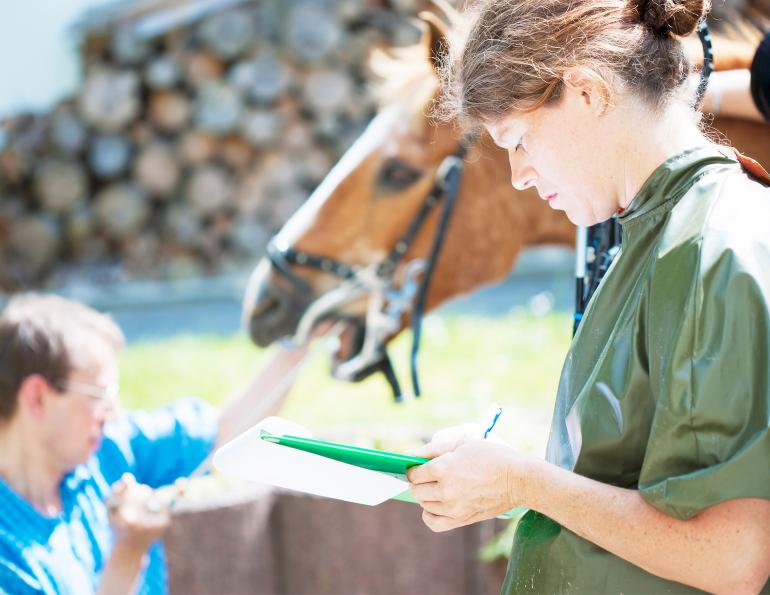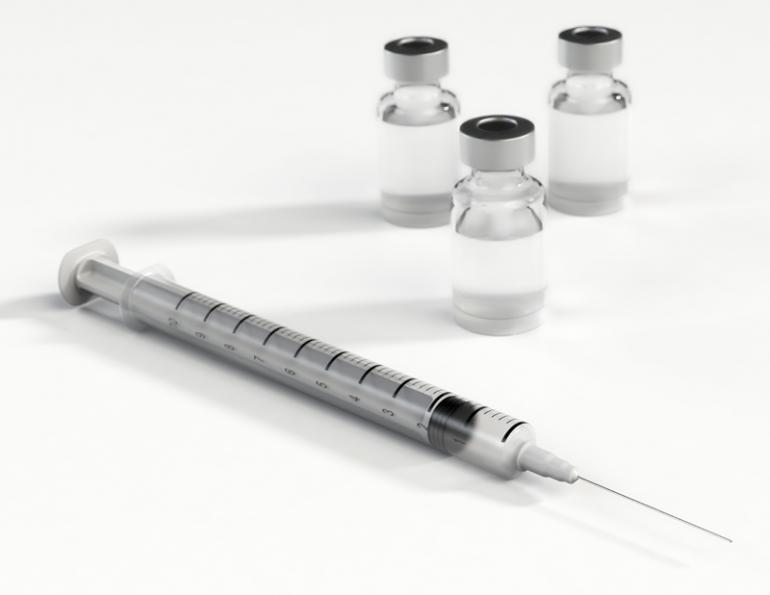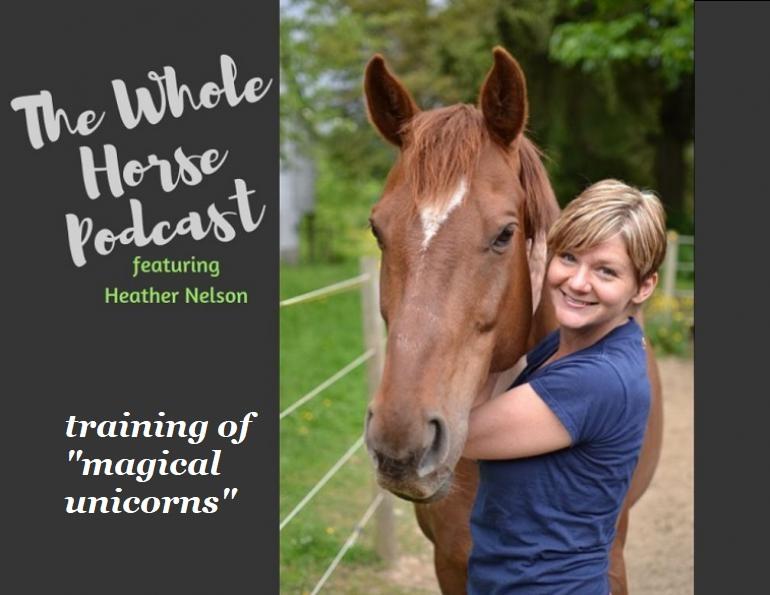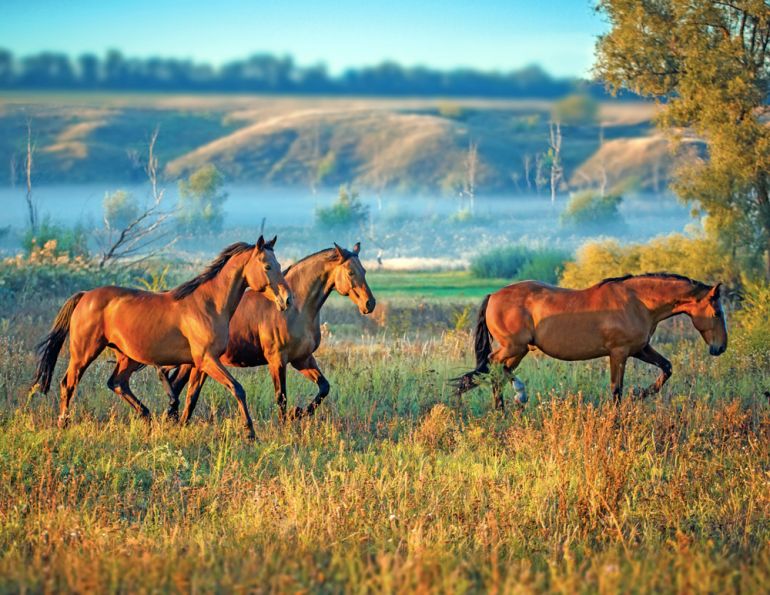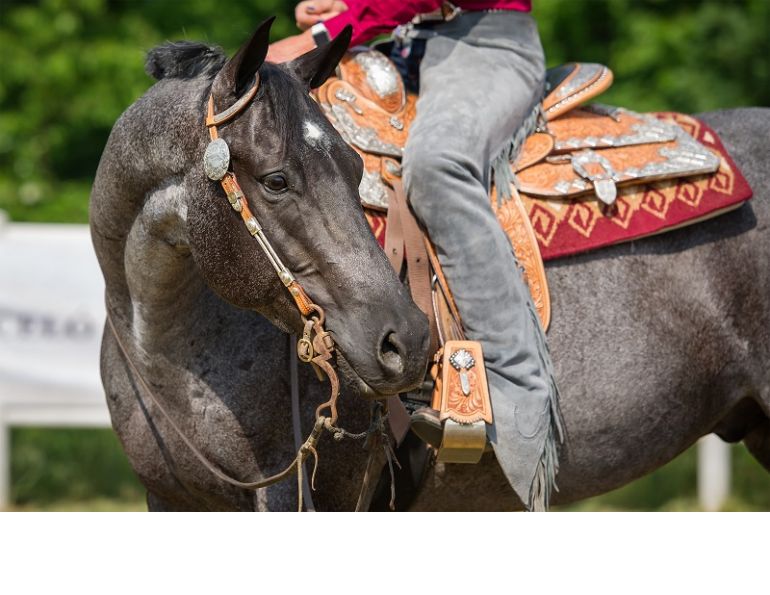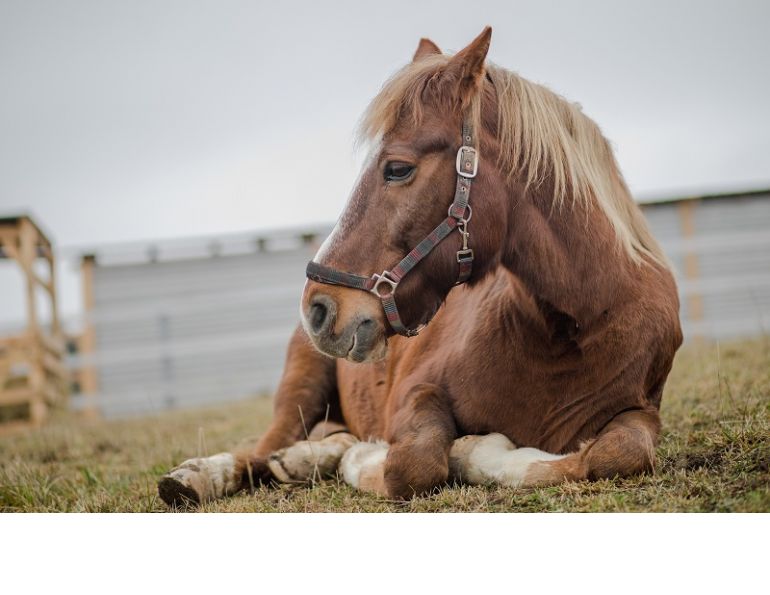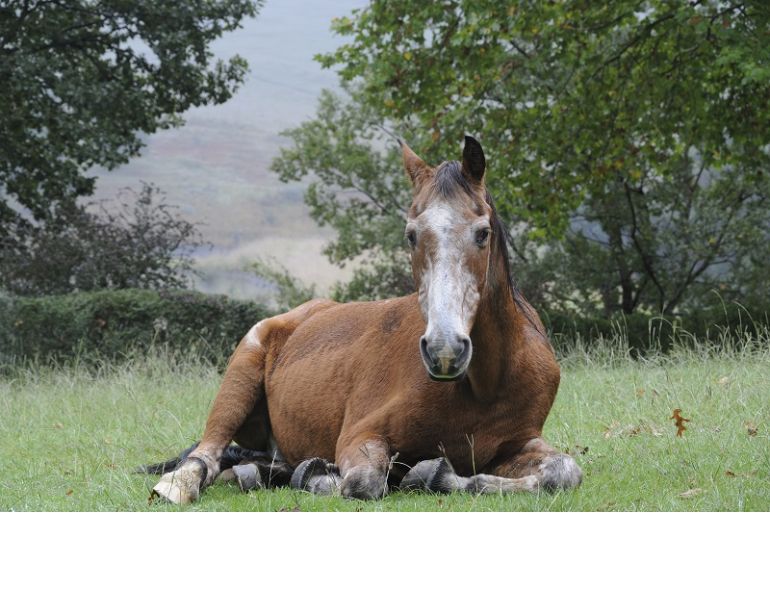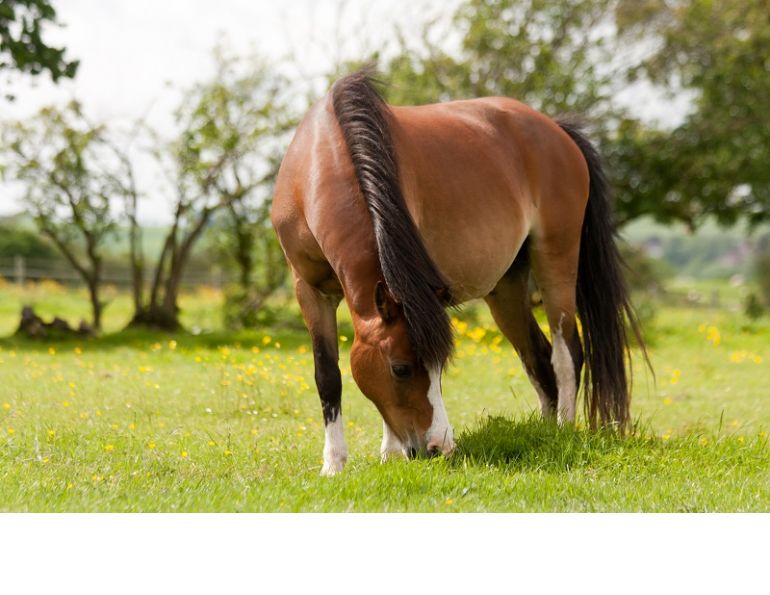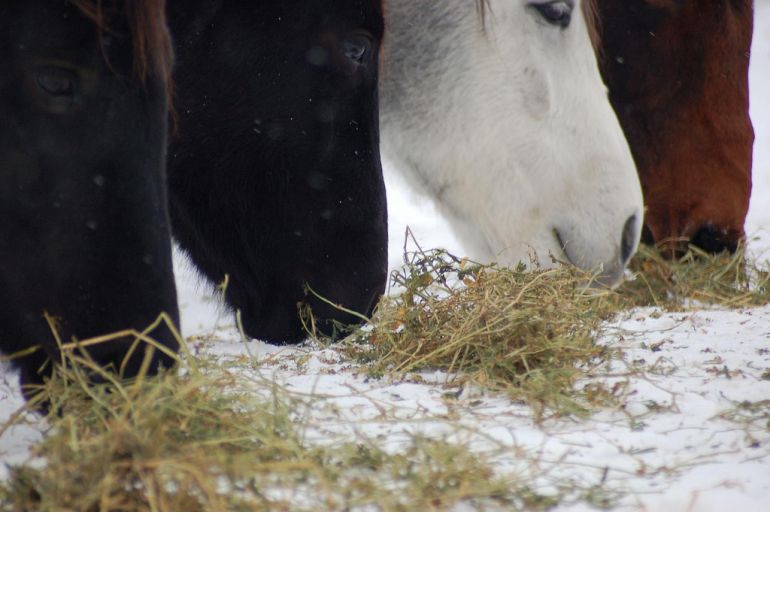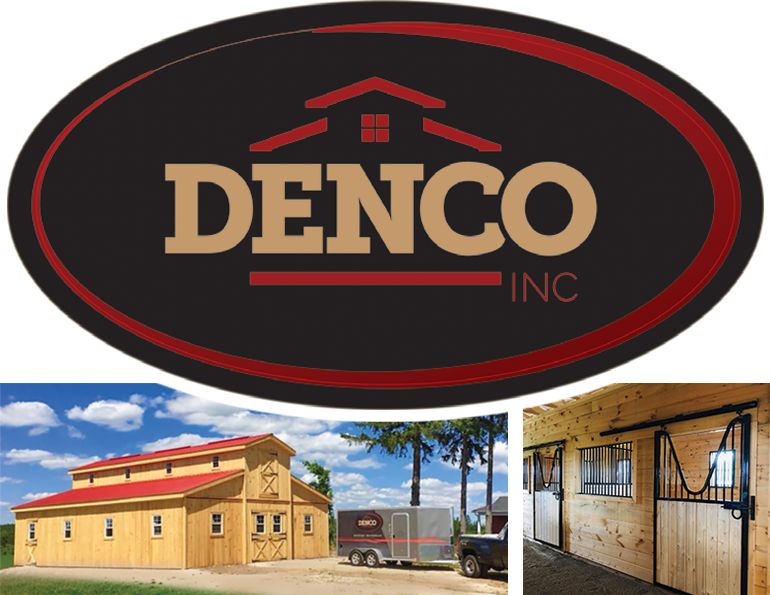Much more than just floating teeth!
By Shelagh Niblock, PAS
Do you remember to get an annual dental exam for your horse? A dental check by your veterinarian involves floating, the process of filing a horse’s teeth to correct irregularities in the occlusal (biting) surfaces, as well as inspecting the teeth for any indication of a variety of other potential problems. In addition to examining the teeth for abnormalities that might cause chewing and/or bitting issues, your vet will also be looking for signs of fractured or loose teeth, as well as signs of ulceration on the cheek mucosa, the tongue, or the gums (gingiva). Your vet will also check your horse’s breath to determine if there is odour indicative of problems such as rotting food trapped in the cheek teeth arcades or prurient or infected gum tissue. As horses get older, dental problems are more likely to occur, but younger horses may also be troubled with dentition issues for which timely treatment is essential to ensure their continued welfare.
Hooks, Waves and Steps
Hooks, waves, and steps are all terms used by veterinarians to describe molar arcade abnormalities created by uneven wear on the occlusal surfaces of the teeth. Horses have hypsodont teeth, which means they are high-crowned with enamel extending past the gumline. Their teeth keep growing throughout the horse’s life to accommodate the wear and tear of eating coarse forage.
For more information about horses’ teeth see Equine Teeth – An Evolutionary Success Story)

A hook or sharp point on the cheek molars can inhibit the horse’s ability to chew, and cause pain, weight loss, and bitting problems. Photo courtesy of Leah Limone DVM, DAVDC-Equine
Uneven wear on equine teeth due to diet and unnoticed dental issues can result in the development of waves or steps. Sharp points or hooks can also develop on the cheek molars on either the buccal (cheek) side of the molar or the lingual (tongue) side. These abnormalities impede the horse’s ability to chew and may result in “quidding” (dropping mouthfuls of partially chewed food), ulceration of the mucosa, weight loss, bitting issues, and pain in the temporomandibular joint (TMJ). Regular dental floating by a veterinarian is critical for maintaining the biting surfaces of teeth in all horses.
Why Does My Horse Have Awful Breath?
You might not even be aware that your horse has bad breath until your veterinarian informs you of it when examining his teeth during the dental exam. Breath that smells like decaying material could be related to food and forage particles trapped between teeth.
The molars in the horse’s cheek arcades should fit together very snuggly, preventing any grain or forage from becoming trapped. However, if the horse has had previous tooth loss or has other irregularities in molar placement, a condition called diastema (interdental gaps) can develop.
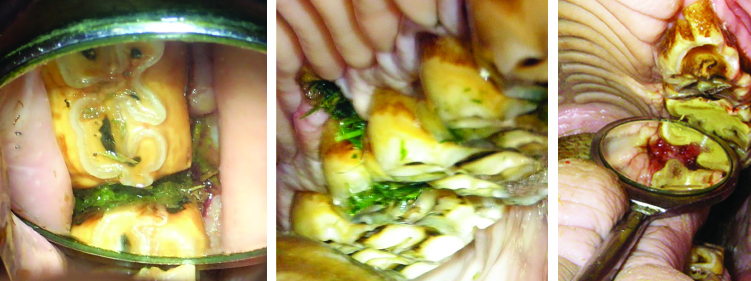
Areas between teeth where food gets stuck due to fractured or worn out teeth, or malocclusions (when teeth are not in a normal position in relation to adjacent or opposing teeth), can trap bacteria and cause inflammation and infection of the gums. Photos courtesy of Leah Limone DVM, DAVDC-Equine
Food trapped in these gaps will start to rot, causing a noticeable odour. When doing a dental exam, the smell of rotting food is the first indicator to your veterinarian of possible diastema, signaling that your horse is at risk of periodontal disease. Trapped food irritates the gingiva and causes inflammation, and inflamed tissues can become infected with bacteria, resulting in more inflammation. Over time, this will result in the horse having foul-smelling breath. Severe gingivitis, if not corrected early, will result in periodontal disease and will likely cause damage to the tooth root and potentially damage the collagen fibres holding the root in place. The result can be tooth loss, migrating teeth, or loose, painful teeth. The remedy for a tooth badly affected by periodontal disease may be to remove it to allow the gingiva to heal; however, tooth removal can cause its own set of problems for your horse’s dental health. A horse with missing teeth requires even more regular dental attention from their veterinarian, possibly even as often as every three months.
What is EOTRH and How is it Treated?
Equine odontoclastic tooth resorption and hypercementosis (EOTRH) is a long name for a dental disease that is not common but is becoming more familiar to owners of senior horses. EOTRH was first reported in 2004, and while the incidence is low, it does seem to be growing more commonplace. The cause of EOTRH is unknown, but when it strikes, the incisor and canine teeth on both the upper and lower jaws are affected; there is no cure except to remove all of the EOTRH-diseased teeth.
EOTRH originates in the root of the tooth, so it is possible that it may start affecting the horse far earlier than what is seen by veterinarians, but cases that are well advanced do exhibit classic symptoms. Horses with EOTRH have swollen, inflamed gingiva adjacent to their incisor teeth, and there is often evidence of severe periodontal disease caused by the inflammation. The disease is characterized by the resorption of the root of the tooth, along with a condition called hypercementosis where the cementum — the tissue covering the root of the equine tooth — grows in an uncontrolled fashion, creating a bulbous and deformed root structure. There is often significant tooth decay associated with this disease, and there can be drainage of infected material into the horse’s mouth and lymphatic system. Because the cementum is the site of the collagen fibres which attach the tooth to the gingiva of the horse, the tooth can become loose and/or fractured. Although we can’t ask our horses how it feels to be troubled with this condition, it’s pretty clear that it is very painful and puts the horse, usually senior, at risk of systemic infections arising from the lymph nodes in the jaw. Horses with this condition generally have a hard time grasping food without significant pain, so even those seniors who are able to enjoy grazing may be compromised.
Related: Equine Dental Care
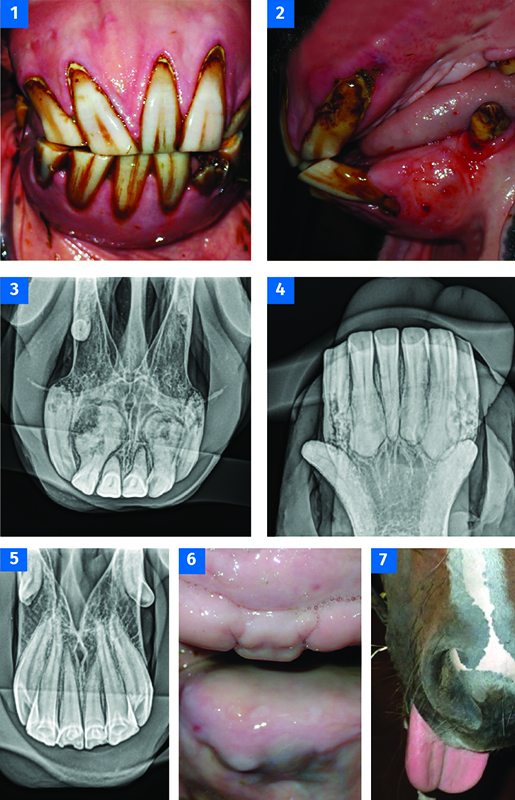
- Figures A and B above: Oral examination findings typically include gingival inflammation and edema, gingival hyperplasia or recession. Bony subgingival swelling and draining tracts may also be present.
- Figures C, D, and E above: Radiographic findings seen with EOTRH include resorptive lesions of the reserve crown and root, widening of the periodontal ligament space, and bulbous enlargement of the reserve crown and root with hypercementosis (Figure C and D). Compare to a normal radiograph (Figure E).
- Figures F and G above: Six weeks after complete incisor extractions, extraction sites are healed with normal gingiva (Figure F). Tongue protrusion often occurs to varying degrees following incisor extractions Figure G).
- Photos courtesy of Leah Limone DVM, DAVDC-Equine
The initial diagnosis of this disease is usually based on a veterinarian’s visual inspection, but the definitive diagnosis is established with radiographs. By the time it is noticed, all the incisors and canine teeth on the upper or lower jaw, and sometimes both, will frequently be affected.
The only treatment for this painful disease is removal of all the affected teeth. If the incisors of both the upper and lower jaws are affected, then all must be extracted. The extraction surgery requires anesthesia, similar to that required for other more invasive dental work. The surgery is usually done on the farm, and only horses having other health issues would require transport to the veterinary clinic for the procedure.
Seeing your senior with all his incisors removed — or even one set of them — may be disturbing as there is significant bleeding, but most horses will recover very quickly after the affected teeth have been removed. Your veterinarian will prescribe post-surgical care that will include antibiotics and nonsteroidal anti-inflammatory drugs as required.
In most cases, the improvement in the horse’s health and experience of life is astounding once the affected teeth have been removed, and contrary to what you might believe, these horses seem to manage on a typical senior diet very well even without a full set of incisors.
Preventative Maintenance
During your horse’s dental exam, your veterinarian may discover any one of a number of other conditions in your horse’s mouth, including caps in the young horse, toothy decay, fractured teeth, birth defects, and developmental abnormalities. All of these conditions can contribute to the risk of developing diastema and subsequently periodontal disease. Any one of these also has the potential to be a significant problem for your horse’s well-being if not addressed.
The key to good lifetime dental health for your horse is preventive maintenance regardless of his age or career. Regular dental exams by your veterinarian are essential, but it is also important to be proactive about necessary dental procedures. Nobody wants an unexpected vet bill, but timely treatments of problems in the making may well save you money down the road, while ensuring better health for your horse.
Our Horses Are Living Longer Than Ever Before
As our senior horses live longer, it is inevitable that we as horse owners will see greater incidence of diseases that were not common even as recently as 30 years ago. The apparent increased incidence of pituitary pars intermedia dysfunction (PPID), also known as Equine Cushing’s, is one such disease. Historically, horses died before they ever got this disease. Now, with earlier detection and the increased potential for horses living well into their 20s and older, we are seeing an apparent higher incidence of PPID. The same can be said for dental diseases like EOTRH. Owning a senior horse requires a higher level of management.
Regardless of the age of your horse, only regular checks can limit the development of dental disease in any horse. Ask your veterinarian when their clinic has a “Dental Month” promotion, and make sure you get an appointment.
Related: The Wild West: Navigating Canada's Unregulared Horse Industry
Related: Caring for the Equine Elder
Main Photo: iStock/Jan Otto



